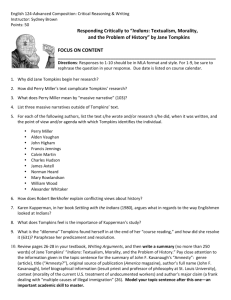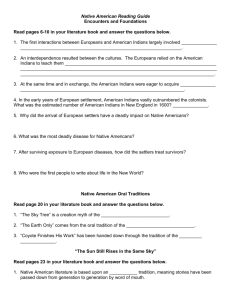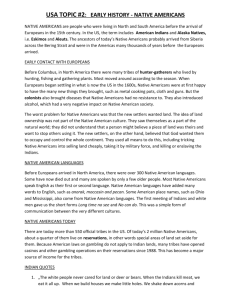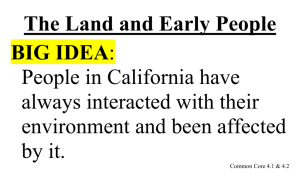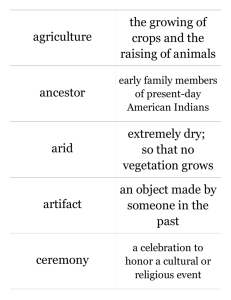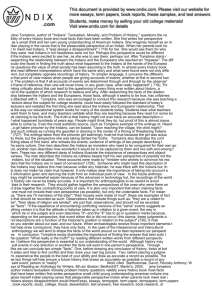скачати
advertisement
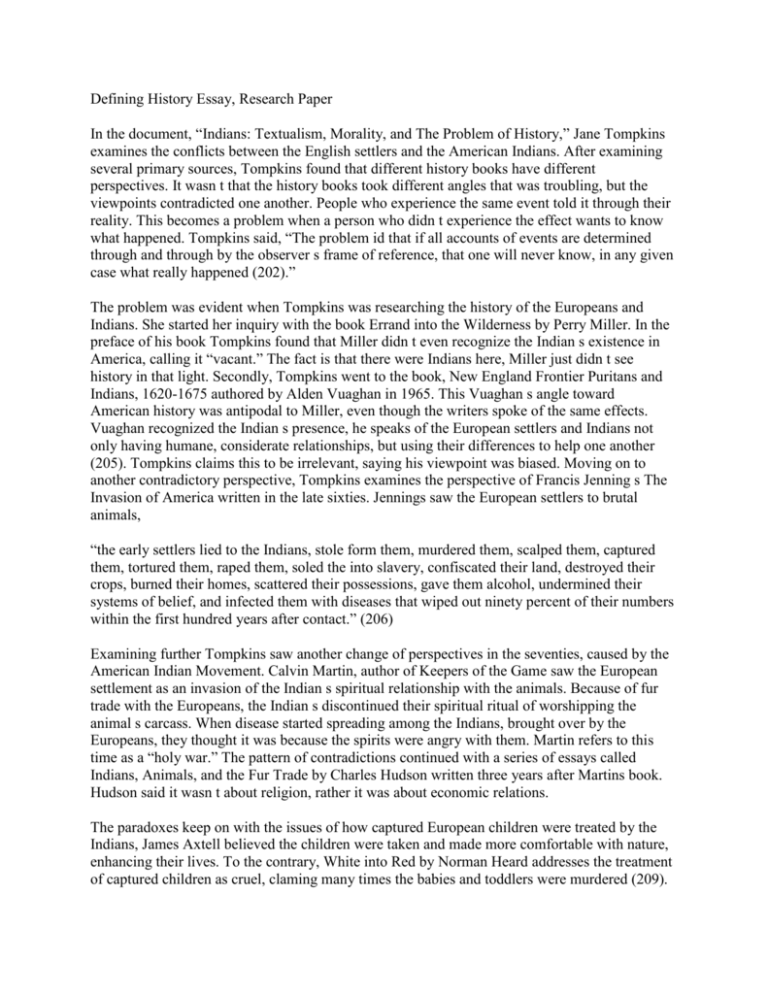
Defining History Essay, Research Paper In the document, “Indians: Textualism, Morality, and The Problem of History,” Jane Tompkins examines the conflicts between the English settlers and the American Indians. After examining several primary sources, Tompkins found that different history books have different perspectives. It wasn t that the history books took different angles that was troubling, but the viewpoints contradicted one another. People who experience the same event told it through their reality. This becomes a problem when a person who didn t experience the effect wants to know what happened. Tompkins said, “The problem id that if all accounts of events are determined through and through by the observer s frame of reference, that one will never know, in any given case what really happened (202).” The problem was evident when Tompkins was researching the history of the Europeans and Indians. She started her inquiry with the book Errand into the Wilderness by Perry Miller. In the preface of his book Tompkins found that Miller didn t even recognize the Indian s existence in America, calling it “vacant.” The fact is that there were Indians here, Miller just didn t see history in that light. Secondly, Tompkins went to the book, New England Frontier Puritans and Indians, 1620-1675 authored by Alden Vuaghan in 1965. This Vuaghan s angle toward American history was antipodal to Miller, even though the writers spoke of the same effects. Vuaghan recognized the Indian s presence, he speaks of the European settlers and Indians not only having humane, considerate relationships, but using their differences to help one another (205). Tompkins claims this to be irrelevant, saying his viewpoint was biased. Moving on to another contradictory perspective, Tompkins examines the perspective of Francis Jenning s The Invasion of America written in the late sixties. Jennings saw the European settlers to brutal animals, “the early settlers lied to the Indians, stole form them, murdered them, scalped them, captured them, tortured them, raped them, soled the into slavery, confiscated their land, destroyed their crops, burned their homes, scattered their possessions, gave them alcohol, undermined their systems of belief, and infected them with diseases that wiped out ninety percent of their numbers within the first hundred years after contact.” (206) Examining further Tompkins saw another change of perspectives in the seventies, caused by the American Indian Movement. Calvin Martin, author of Keepers of the Game saw the European settlement as an invasion of the Indian s spiritual relationship with the animals. Because of fur trade with the Europeans, the Indian s discontinued their spiritual ritual of worshipping the animal s carcass. When disease started spreading among the Indians, brought over by the Europeans, they thought it was because the spirits were angry with them. Martin refers to this time as a “holy war.” The pattern of contradictions continued with a series of essays called Indians, Animals, and the Fur Trade by Charles Hudson written three years after Martins book. Hudson said it wasn t about religion, rather it was about economic relations. The paradoxes keep on with the issues of how captured European children were treated by the Indians, James Axtell believed the children were taken and made more comfortable with nature, enhancing their lives. To the contrary, White into Red by Norman Heard addresses the treatment of captured children as cruel, claming many times the babies and toddlers were murdered (209). The inconsistency of views continue until Tompkins says, “It may well seem to you at this point that, given the tremedous variation amoung the historical accounts, I had no choice but to end in relativism. (213)” http://ua-referat.com
